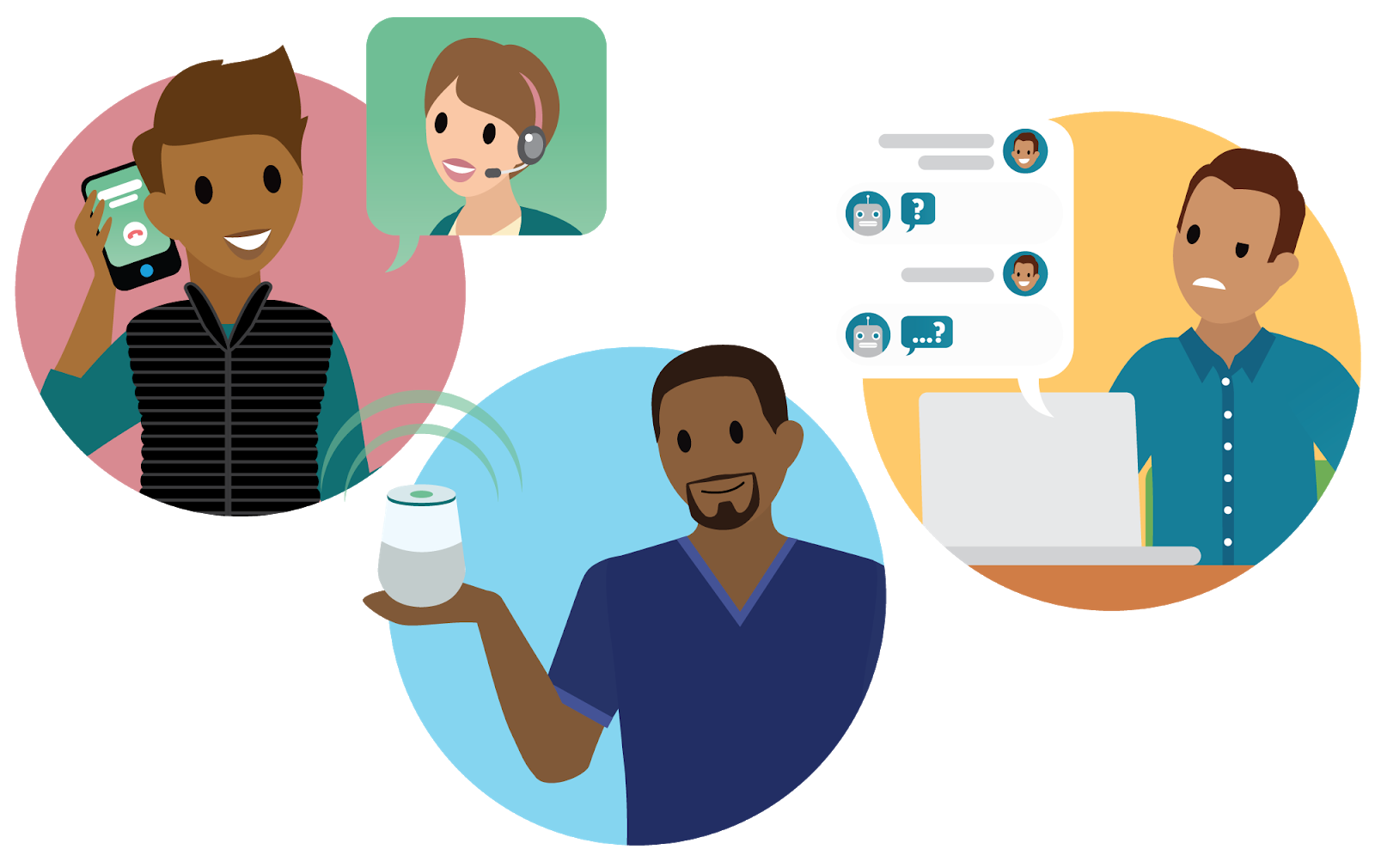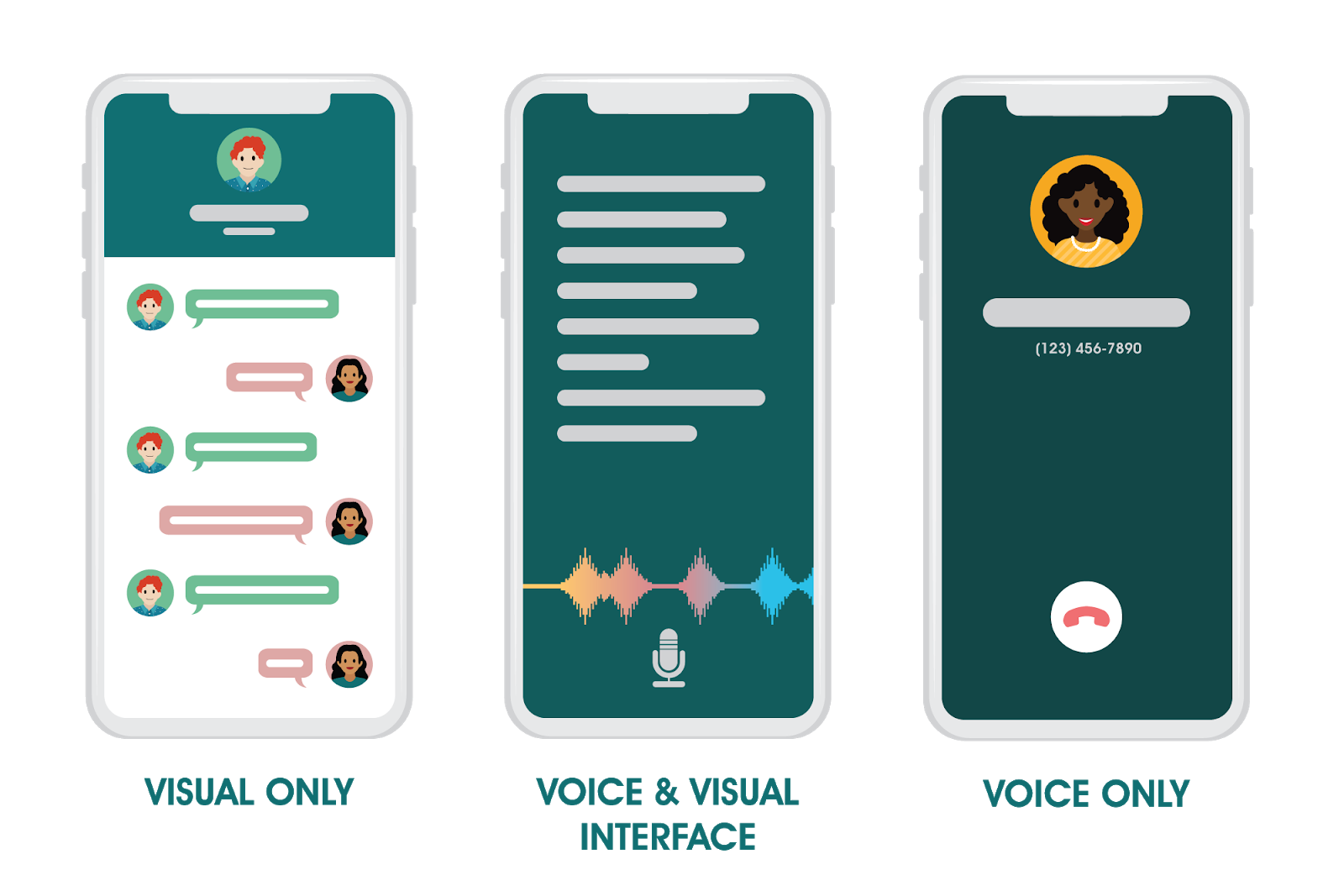Explore Conversation Design
Learning Objectives
After completing this unit, you’ll be able to:
- Define conversation design.
- Identify when conversation design is relevant and when it’s not.
- Explain why conversation design is important in customer relationships.
Conversation: The Bedrock of Relationships
Relationships are at the heart of every business. Whatever your products and services are, it’s your relationships with your customers that makes your business thrive. Want to build a successful business? Foster great customer relationships.
If you haven’t yet taken the Relationship Design module, you might want to do so now before continuing on here. As a quick refresher, Relationship Design is the creation of experiences that foster ongoing engagement and strengthen connections between people, companies, and communities over time.
In other words, Relationship Design helps you create user experiences that build better relationships between your company, your customers, and the rest of the world. Conversations are at the heart of those experiences.
What Is Conversation Design?
We at Salesforce believe conversation is the next wave of user experience. What does that mean? Think about the last time you got customer support through a company’s app or website, or talked to Alexa or Siri on your phone or smart speaker. Did you chat with a customer service rep or navigate through an automated voice or text menu? That was a conversation, and it was informed by conversation design. Your impression of the brand you were dealing with was no doubt influenced by how well they designed that conversation. Were you able to get what you needed, quickly and easily? If so, you probably left with a positive impression.
We define it like this: Conversation design (CxD, for short) refers to the concepts, strategies, and practice of designing conversations to build better relationships with customers at scale. Successful companies use conversation design to minimize pain points and build customer trust. On the flip side, poor conversation design can erode trust—fast!

In our digital world, conversations between brands and customers can happen in person or remotely, and via voice, text, or multimedia.
Humans can talk to other people in person, over the phone (voice), or through email or real-time chats (text). Think of a customer walking up to the service desk or calling a telephone support number. That’s good old-fashioned human-to-human conversation. You can use conversation design to make these conversations better by training your service reps, creating frameworks and dialog examples for them to work from, and so on.
Bots, also known as chatbots, service bots, and digital assistants (among other names), can also talk to people through those same channels. Bots have much more limited range than humans when it comes to conversations. And, for now, unlike people, they can’t go off script. Whatever conversation you design for a bot, that’s the one it’s going to try to have.
Good Conversation Design Is Good for Your Brand
When we talk about conversation design for brands, we’re talking about designing more interactive customer engagement at scale. People around the world have thousands of conversations each day with voice bots and text bots via different companies’ apps, websites, and support phone numbers. Good conversation design ensures thousands of customers leave those conversations thinking, “That was easy! I’ll shop there again!” Bad CxD leaves all of those customers feeling annoyed—or worse, misled—because a brand’s bot couldn’t resolve their problems or smoothly transition them to a different support channel.
Let’s dig into that a little more.
Good conversation design:
- Helps customers do what they need to do with a brand.
- Helps brands develop their relationship with customers, which is invaluable.
- Leaves customers feeling good about their experience with a brand, and wanting to do business with that brand again.
Bad conversation design:
- Makes the customer feel unheard or unseen by the brand.
- Misconstrues a user’s gender identity.
- Racially profiles customers, or otherwise exhibits bias, because a brand’s bot was not built to be inclusive of variations in language.
- Leaves customers feeling annoyed, frustrated, or otherwise not wanting to do business with that brand any longer.
You might be thinking, “Why would a company design conversations that alienate their customers? What brand would build a racist chatbot? That’s ridiculous!” Often, poor conversation design is borne out of lack of awareness and intention. Companies don’t set out to anger customers and erode brand sentiment on purpose. It happens by mistake, due to some combination of poor design and execution. Even if it’s unintentional, bad conversation design erodes customer sentiment around a brand.
Good conversation design, on the other hand, helps customers get things done and resolves issues. As a result, it usually bolsters customer sentiment around a brand. Conversation design, then, is a means of designing scores of conversations your company has with thousands of customers stretching into the future. Many of these conversations are automated, taking place between programmed chatbots representing your brand to real, live human beings. All of this happens when companies intentionally set out to build great customer relationships through conversations.
Conversation Design Is Not Graphical Design
We’ve established what conversation design is and why it’s important. But how—and when—do you use it? The rest of this unit provides a high-level perspective on the how and when of CxD. The next two units in this module dive deeper into the conversation design process and strategies, and give you some hands-on experience in the basics of designing inclusive conversations.
But first, an important announcement. Two of ’em, actually. Here’s the first: Conversation design is not graphical design. Graphical design is grounded largely in visuals. When it comes to voice and chatbots, it’s all about the words and the language.

And the second announcement, because it follows-on so nicely to the first: Conversation design is not “writing dialogs.”
While some might say that CxD is writing dialogs—as though it’s simple and tactical—that feels a little, shall we say, reductive.
Conversation design leverages decades of research on linguistic patterns to build a strategic system of communication—from how to take turns to how to cultivate a specific tone. We use those insights to actively design the discourse so that the experience doesn’t frustrate, alienate, mislead, or overwhelm the user.
Conversation design is called design because there’s strategic thought behind how and what you say. Words not visuals. Systematic, not one-off. We’ll get into the details—the linguistic research insights about patterns and discourse markers and other super cool stuff—later in this module. For now, just imprint this in your brain: Conversation design makes conversation-based experiences better for your users.
When Is Conversation Design Relevant?
Practicing good conversation design doesn’t mean thinking strategically about every last interaction you have with your family members, coworkers, and folks behind the counter at your local coffee shop. So when is conversation design relevant?
1. When any aspect of the product experience you’re working on involves conversation.
For instance, if you’re observing or evaluating a conversation between other people using AI (for example, monitoring a sales call for overlapping speech between the salesperson and the customer), CxD is relevant. Or if you’re creating a conversation between the system and the user (for example, chatbots), CxD is relevant then, too.
2. If there’s any turn-taking going on in a dialog between your product and the user, conversation design is relevant.
If the system, say a chatbot, is producing language to the customer and the customer responds with language, that’s conversational. But if the system presents language to the customer, say, on a webpage, and the customer can’t respond with language, it’s not a conversation.
If you’re working on a conversational experience, engage a conversation designer right away. Just as you would in any other design project, onboard a conversation designer at the beginning of your process or as close to it as possible. Why? Their expertise—and brainpower—will help make the whole of your product experience better for your users.
How do you go about designing bots that build relationships with real people through conversation? We start to answer that question in the next unit by looking at the conversation design process.